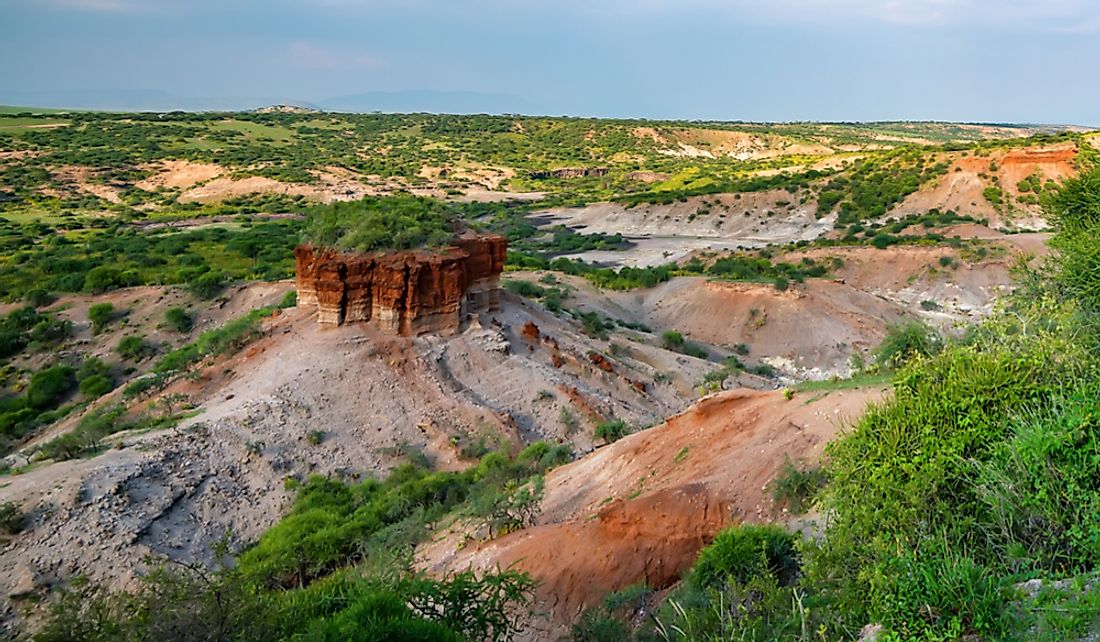Where Is The Olduvai Gorge Located And Why Is It Important?

Olduvai Gorge is an important paleoanthropological site that has the oldest evidence of human evolution. Paleoanthropologists have discovered hundreds of fossilized bones and stone tool at the site that dates back to millions of years, leading to the conclusion that Africa was the place for human evolution. The word “Olduvai” is a misspelling of the word “Oldupai,” a Maasai word for wild sisal that is common in the area. The excavation and research program at Olduvai Gorge was established and developed by Louis and Mary Leakey, British/Kenyan paleoanthropologists. The collection of animal remains and tools in a common place is regarded as evidence of the existing social interactions and communal activities.
Location of the Olduvai Gorge
Olduvai Gorge is situated in the Great Rift Valley between Serengeti National Park and Ngorongoro Crater. The site is part of the Serengeti Plains in the Arusha Region, Tanzania. The gorge is about 28 miles from Laetoli, also an important archaeological site for early human settlement. The Olduvai Gorge is about 30 miles long and 295 feet deep. However, it is not large enough to be considered a canyon. A river that cuts through its several layers and has led to the formation of four beds, with the oldest bed being approximately 2 million years old. The gorge cuts through a Pleistocene lake bed to about 90 meters deep. At about 8 kilometers from the mouth, the main gorge is joined by a side gorge which originates from Lemagrut Mountain.
Brief History of the Gorge
The Olduvai Gorge was first visited in 1911 by Wilhelm Kattwinkle, a German archaeologist and physician who had traveled to Africa to conduct a study on sleeping sickness. While on his visit to the gorge, he saw several fossil remains of a three-toed horse which had become extinct. His discovery inspired Hans Reck, a German geologist, who visited the gorge in 1913. With his team, Hans found remains of hominin dating 17,000 BP. After World War I, Louis Leakey visited Hans in Berlin to view the fossils that had been obtained from Olduvai. When he saw the fossils, Leakey was convinced that the gorge could be holding stone tools since the fossils were almost of the same age as Kenya’s Kariandusi prehistoric site where he had discovered hand axes. Leakey and his wife Mary are credited for most of the excavation and discoveries at Olduvai Gorge.
Importance of the Site
Olduvai Gorge is an important fossil site and forms part of the World Heritage Site. The site has revealed a great deal about the human past and the development of tools. It has produced evidence of the hominids and how they may have lived. The first Homo habilis fossils were discovered at the gorge in 1960 by Jonathan Leakey. The skull of Zinjanthropus was found there by Mary Leakey in 1959. Several stone tools have also been discovered at Olduvai Gorge. These stone tools have been classified as Oldowan. The gorge also produced evidence of hominids, Paranthropus boisei, which have been referred to as “nutcracker man” due to thick teeth enamel that could easily crack nuts. Evidence of hunting and scavenging have also been discovered at Olduvai.











